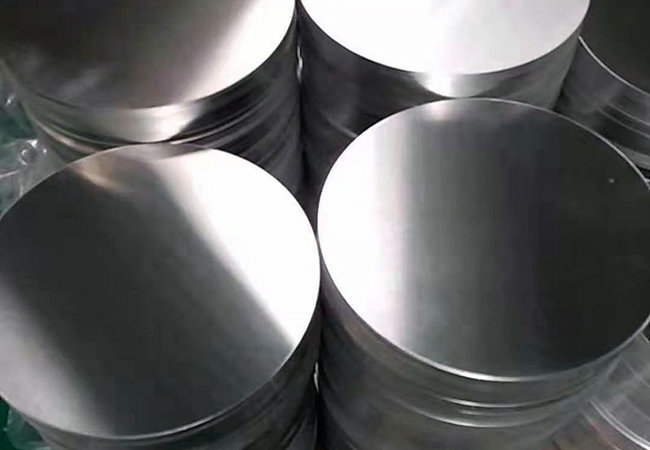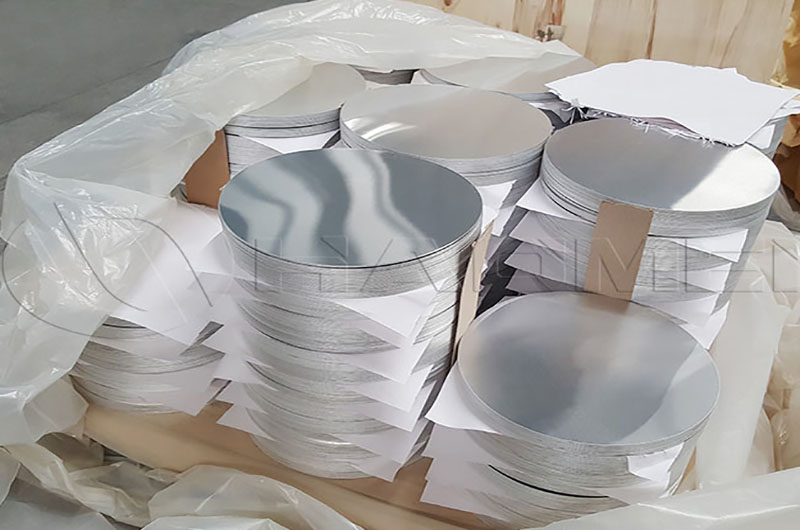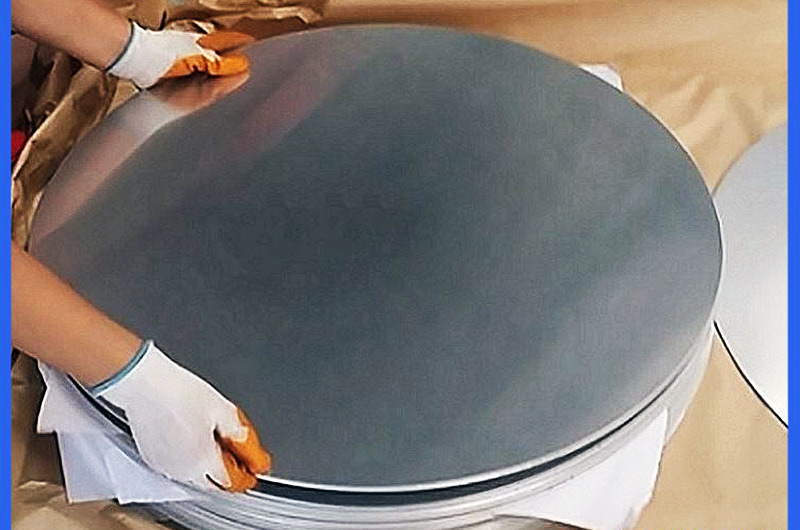- Different production processes
- Performance is different
- Processing temperature
- Raw materials are different
- Applications
In the purchasing process of aluminum wafers, there are different requirements for the type, brand, and process of aluminum wafers according to different needs. In particular, the distinction and identification of cold-rolled aluminum wafers and hot-rolled aluminum wafers are of great importance. role. The differences between cold-rolled aluminum plates and hot-rolled aluminum plates are as follows:
Different production processes
Cold Rolled Aluminum Disc Circle: Aluminum plates are extruded, stretched, drawn and processed through cold rolling mills at room temperature to achieve the required size and shape.
Hot Rolled Aluminum Disc Circle: The aluminum billet is extruded and stretched through a hot rolling mill at high temperatures to form the required size and shape.
- Cold-rolled aluminum disks are produced from aluminum coils (8mm thick) through a cold rolling mill.
- Hot rolling is made by heating aluminum slabs (400-500mm thick) and rolling them at high temperature in a hot rolling mill.
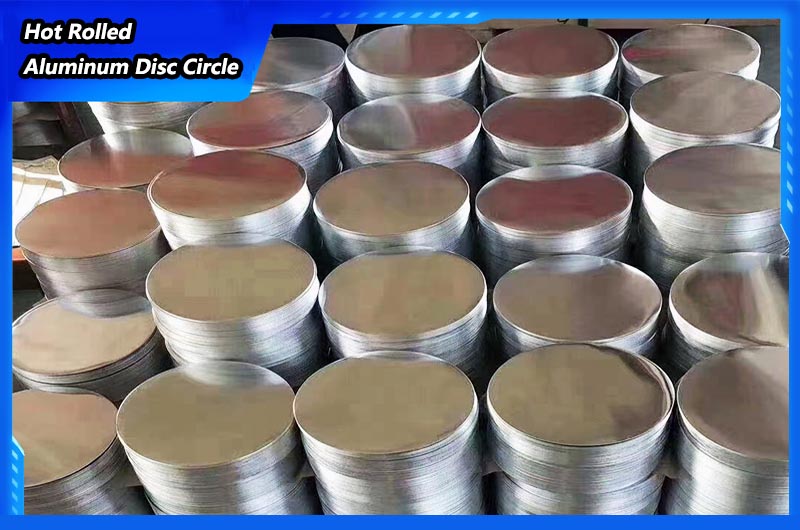
Performance is different
Hot-rolled aluminum disks have good surface quality, good mechanical properties, ductility, and oxidation effects. However, processed aluminum disks are generally made of aluminum plates, and are naturally affected by the properties of the aluminum plates.
- The cold rolling process can provide higher surface finish and dimensional accuracy, and aluminum plates are generally flatter and more uniform, but the mechanical properties are relatively low.
- The hot rolling process can improve the mechanical properties of aluminum and make it stronger, but the surface finish and dimensional accuracy may not be as good as cold rolling.
The choice of cold rolling or hot rolling depends on the requirements of the final product. If higher surface finish and dimensional accuracy are required, cold rolled aluminum plates are suitable. If mechanical properties are more important, consider hot-rolled aluminum discs.
In actual applications, some products may use hybrid processes to take into account different performance requirements.
Processing temperature
- Cold Rolled Aluminum Disc Circle is performed at room temperature.
- Hot rolling is performed at higher temperatures, usually above the recrystallization temperature of aluminum.
Raw materials are different
The difference between them is that the supply of aluminum billet is different.
- Hot rolled billets are cast aluminum ingots - heated - rolled into coils for cold rolling.
- Cold rolled billet is cast - rolled - cold rolled.
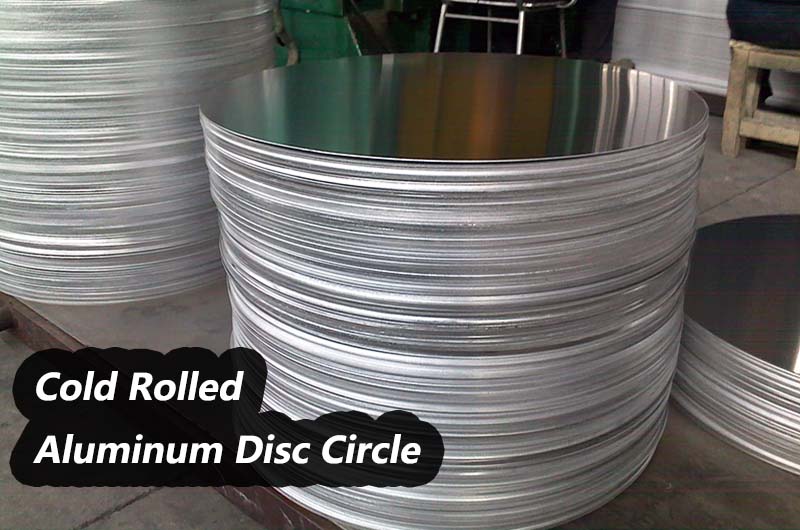
Applications
Cold Rolled Aluminum Disc Circle
Cold Rolled Aluminum Disc Circle for cookware and kitchenware: Cold rolled aluminum discs are commonly used in the production of cookware such as pots, pans and baking sheets. The cold rolling process provides a smoother surface finish and better dimensional accuracy, making it suitable for these applications.
- Alloys: 3xxx series alloys (such as 3003) are often used in cookware due to their good formability, corrosion resistance, and suitability for cold working.
- Condition: H14 or H24 condition for balance of strength and formability.
Cold Rolled Aluminum Disc Circle Electronic Components: Cold rolled aluminum discs are used in the production of electronic components where precise dimensions and smooth surfaces are critical.
- Alloys: 1xxx series alloys, such as 1100, are often chosen for their high purity and good formability.
- Status: O (annealed) or H12, easy to form.
Cold Rolled Aluminum Disc Circle Building Materials: Cold rolled aluminum discs can be used in certain building applications that require a high level of flatness and dimensional accuracy.
- Alloys: The 5xxx series alloys (such as 5052) are known for their high strength and corrosion resistance.
- Condition: H14 or H24 condition, combining strength and formability.
Hot Rolled Aluminum Disc Circle
Hot Rolled Aluminum Disc Circle for Structural Components: Hot Rolled Aluminum Disc Circle is commonly used to produce structural components for buildings, bridges and other infrastructure. The hot rolling process enhances the mechanical properties, making it suitable for load-bearing applications.
- Alloys: The 6xxx series alloys, especially 6061 and 6082, are commonly used in structural components due to their excellent strength-to-weight ratio.
- Condition: T6 or T651 condition after hot rolling to improve strength and hardness.
Hot Rolled Aluminum Disc Circle for Automotive Parts: Some automotive parts, such as chassis components and structural elements, may use hot rolled aluminum discs because the hot rolling process improves strength and toughness.
- Alloys: 6xxx series alloys, such as 6061 or 6063, are often selected for automotive parts due to their combination of strength, formability, and corrosion resistance.
- Condition: T6 or T651 for improved mechanical properties.
Hot Rolled Aluminum Disc Circle for Heavy Machinery: Hot Rolled Aluminum Disc Circle is suitable for heavy machinery and equipment where strength and durability are critical.
- Alloys: 7075 etc. The 7xxx series alloys are known for their high strength and toughness and are suitable for use in heavy machinery.
- Condition: T6 or T651 condition for maximum strength.
In some cases, a combination of cold-rolled and hot-rolled aluminum can be used in the same product. For example, products that require both high dimensional accuracy and enhanced mechanical properties can combine two types of aluminum disks in different parts.
- CC aluminum discs are mostly used in spinning production processes
- DC aluminum discs are suitable for stamping and drawing production processes.
When choosing between cold-rolled and hot-rolled aluminum disk, the specific performance characteristics required for each application must be considered. The selection will be influenced by factors such as surface finish, dimensional accuracy, mechanical strength, and the overall intended use of the aluminum pan.
Informations you may be interested in:
- Hydrophilic aluminum foil vs non-hydrophilic aluminum foil
- Solutions to hydrophilic aluminum foil problems
- What is Hydrophilic Aluminum Foil?
- Hydrophilic aluminum foil performance indicators
- What components in air conditioning systems use aluminum foil?
- How is aluminum foil used for thermal insulation in air conditioning systems?
- Can aluminum foil be used in outdoor air conditioning units?
- Comprehensive analysis of air conditioning aluminum foil: classification and applications
- What kind of material is air conditioning aluminum foil made of and what are its
- 1050 Versatility in Air Conditioner Aluminum Foil Applications

